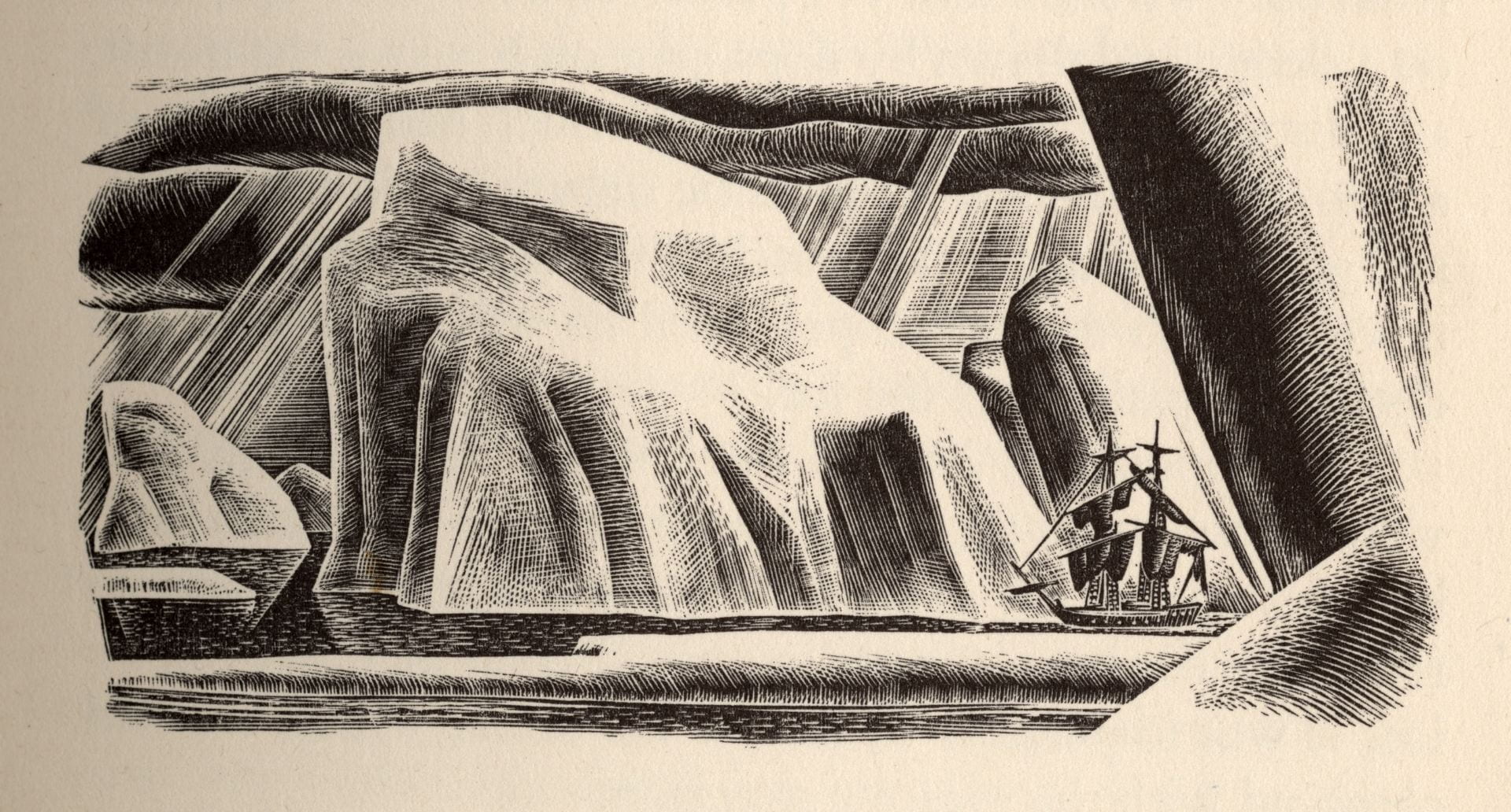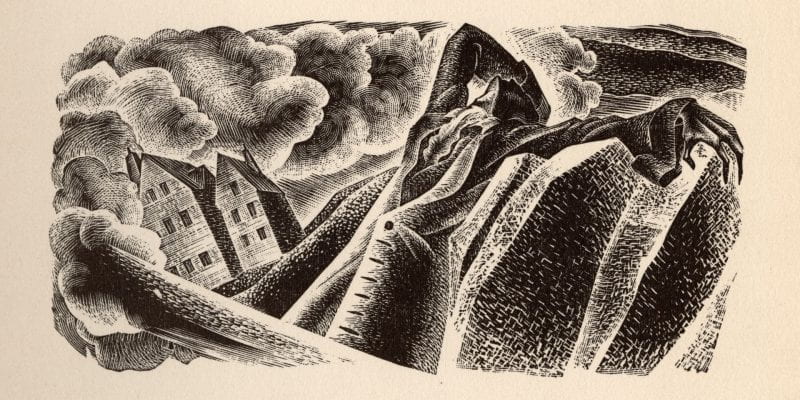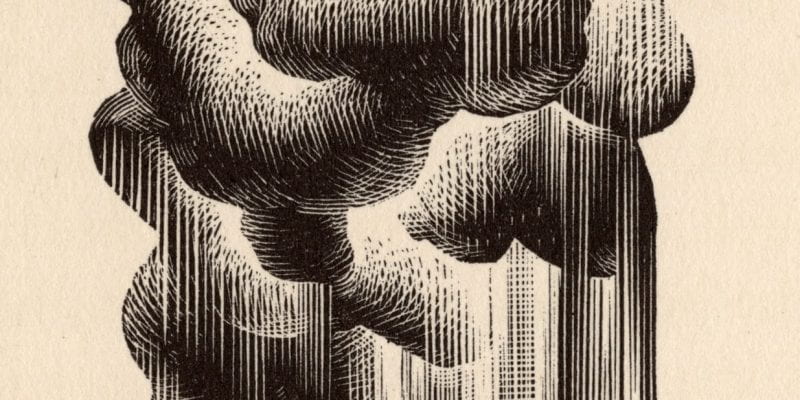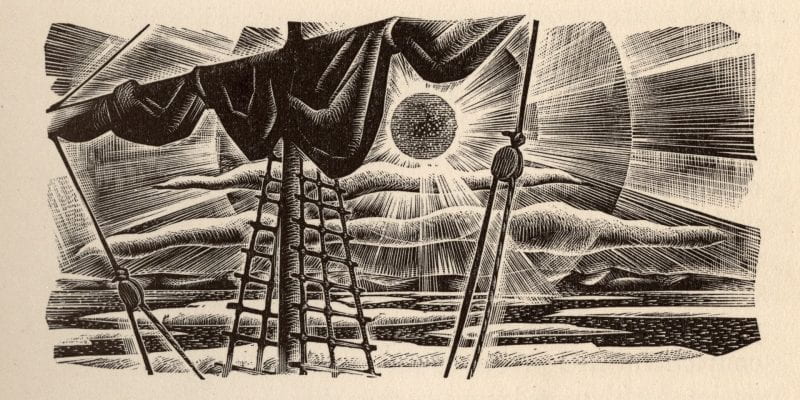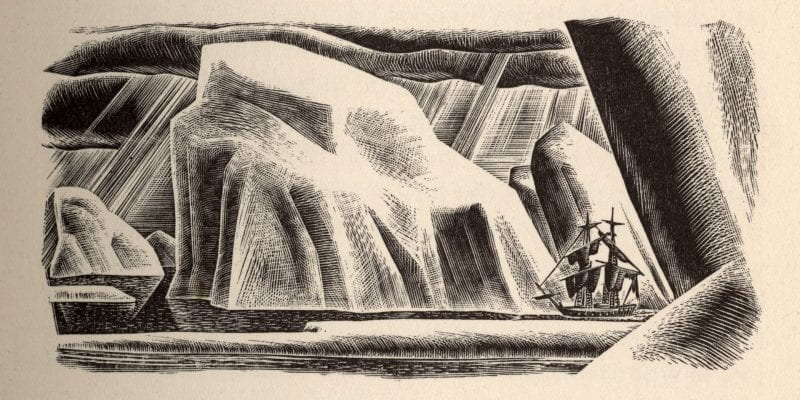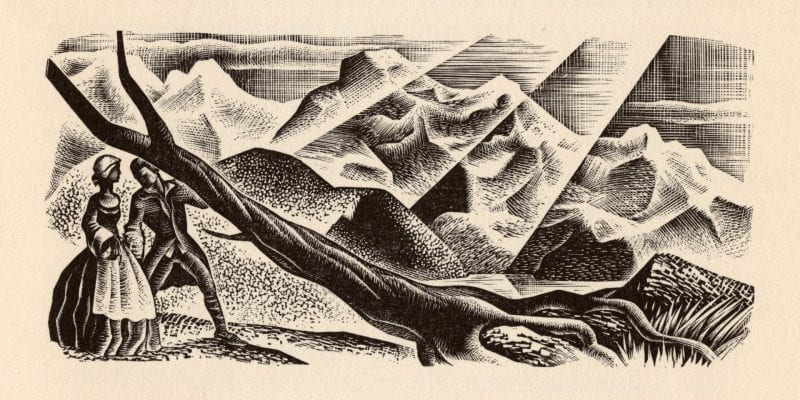Frankenstein, the Arctic, and Climate Change
Lynd Ward’s wood-cut illustrations for Mary Shelley’s Frankenstein, or, The Modern Prometheus (1934), often put the natural world front and center, as though the landscapes are themselves a dramatic character in the story. The prominence given to nature by Ward is fitting given the natural world plays an essential role in the plot of Frankenstein — but also in the story of its writing.
Mary Shelley wrote Frankenstein in the summer of 1816 while traveling in Geneva, Switzerland. The weather that year was notable: Central Europe was colder, rainier, and stormier than usual. The eruption of Mt. Tambora in Indonesia had spewed so much ash into the upper atmosphere that sunlight was partially blocked: global temperatures fell and atmospheric circulation altered. Trapped largely inside, Shelley and her companions committed to a writing task that mirrored the brooding weather outside: they would each write a ghost story. And so Frankenstein was born, a monster whom a human created but who runs amok. Today, climate change, and its role in the intensification of severe weather, can be attributed to human activity rather than to a volcanic eruption.
As the Ward drawings on view illustrate, the Arctic is a key setting in Frankenstein as Victor Frankenstein travels to the ends of the earth in search of his monster and recounts his tale to an arctic explorer whose ship is stuck in the Arctic ice: the ice sheet was solid and largely impassable in 1816, a different landscape than the melting ice today.
Mary Wollstonecraft Shelley ; with engravings on wood by Lynd Ward
Frankenstein, or, The modern Prometheus
New York : Harrison Smith and Robert Haas, 1934
CO2 PPM in 1816: 283.9
Additional Information
The Lynd Ward Collection of Wood Engravings and Other Graphic Art includes approximately 5,000 wood engravings, proof sheets, wood-engraving blocks, and original illustrations for many of Ward’s books, as well as some prints not associated with his published work. There are also lithographs and charcoal drawings. Highlights include many of the wood blocks and proof sheets for Ward’s illustrations to Mary Wollstonecraft Shelley’s Frankenstein, or The Modern Prometheus (1934).
